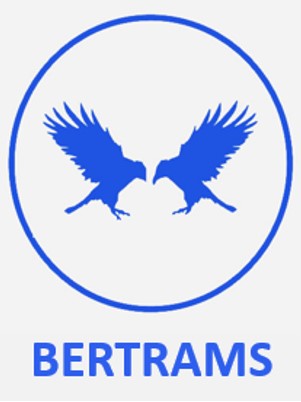ch
How We Treat the Individual Members of Our National and International Community in the Intersnack Countries in the Specific Case of Digitalization and the Requirements That Help Us Build a New World
Overview
Digitalization at Intersnack is not merely a technological transformation but, above all, a cultural one that affects every one of the corporation’s 31 countries and 15,000 employees. The successful implementation of the multi-million Euro Infor CloudSuite requires a nuanced approach that blends traditional wisdom with modern demands and converts cultural resistance into energy for transformation.
The challenge lies not in the technology itself, but in the human-centric implementation that respects local cultures while simultaneously establishing global standards. This balance between standardization and cultural sensitivity is the key to the success of the digital transformation.
Intersnack’s Digital Transformation Architecture
Technological Foundation of the New World of Work
Intersnack’s 10-year digital strategy with Infor replaces 17 disparate ERP systems with a unified CloudSuite Food & Beverage Platform. This platform includes Enterprise Resource Planning, Human Resources, Financials, Supply Chain Management, and Artificial Intelligence capabilities via Infor Coleman.
The cloud-first strategy allows for the scalable integration of new acquisitions and supports European expansion. This technological foundation provides the infrastructure for culturally-adaptive work processes that can accommodate regional differences.
Servant Leadership as a Digital Enabler
The multinational top management—including Maarten Leerdam (CEO), Henrik Bauwens (CFO), Johan van Winkel (COO), and Fabien Duvilla (CCO)—consciously practices “Servant Leadership” principles, which are essential for digital transformation.
Servant Leadership fosters trust, collaboration, and innovation, all of which are critical factors for successful technology adoption. This leadership philosophy empowers employees, removes barriers, and promotes continuous learning—the very qualities needed for a culturally-sensitive digitalization process.
Culture-Specific Implementation Strategies
Germany: Structured Digitalization with a Quality Anchor
German employees typically exhibit a strong inclination toward control and quality orientation. The digital strategy leverages these characteristics through:
- Phased implementation with clear milestones and quality gates
- Structured training programs with certification components
- Detailed documentation and best-practice guides
- Quality metrics for digital processes that meet German standards of excellence
Netherlands: Consensus-Oriented Technology Adoption
The Dutch egalitarian culture requires participatory decision-making. The digital transformation utilizes:
- Bottom-up innovation through employee input in system design
- Flat hierarchies in digital workflows and approval processes
- Consensus-based technology selection with team co-determination
- Peer-to-peer learning instead of top-down training
France: Creative Digitalization with an Intellectual Standard
The French culture of discussion and intellectualism is harnessed for:
- Ideation sessions for digital innovation with conceptual depth
- A philosophical framing of digitalization as a cultural evolution
- Longer development cycles for well-thought-out solutions
- Creative problem-solving for technological challenges
Belgium: Federal Flexibility in Digital Structures
The Belgian aptitude for complexity and compromise enables:
- Hybrid systems that support various ways of working
- A cultural bridging function between German and French approaches
- Flexible implementation speeds tailored to local needs
- Multilingual systems and culturally-adaptive interfaces
Ubuntu Philosophy: “I am because we are”
Ubuntu principles create a sense of collective digital responsibility:
- Team-based digital literacy over individual technological competence
- Peer support networks for technological challenges
- Collective problem-solving for system failures or implementation issues
- Shared responsibility for digital security and data quality
Wu Wei Leadership in Digital Transformation
Action Without Action: Natural Technology Adoption
Wu Wei principles facilitate an organic approach to digitalization:
- Minimal intervention for maximum results through intelligent system design
- Natural user adoption instead of forced compliance
- Systemic thinking for emergent digital solutions
- Flow-based workflows that respect cultural work rhythms
Situational Digital Leadership
Wu Wei leadership adapts to technological circumstances through:
- A flexible response to regional implementation challenges
- Natural authority derived from technological competence rather than hierarchical position
- Minimal resistance achieved through culturally-intuitive system designs
- Organic change management instead of structural coercion
Recognizing Cultural “HELP” Signals in Digitalization
Early Warning Systems for Digital Resistance
It is important to recognize culture-specific warning signs during technology implementation:
- Germany: Excessive system documentation as an attempt to control; perfectionistic implementation delays; quality-focused system criticism as resistance to change.
- Netherlands: Consensus paralysis in technology decisions; activation of informal networks against central system directives; egalitarian rejection of hierarchical approval processes.
- France: Intellectual system criticism without constructive alternatives; arguments of cultural superiority against international standards; creative workarounds instead of direct system use.
Preventive Intervention Strategies
A culturally intelligent response to “HELP” signals includes immediate cultural support through local change champions and the integration of local practices into global system designs.
Regarding how we handle data: it is not enough to simply look at data and what it might say. We must understand the root cause and where this data’s extreme curves, whether external or internal, originate. It is insufficient to have a data system analyze these curves; the goal is to comprehend how the environment has “manipulated” this data, why this experience occurred, and how we, as external reference drivers, can introduce new ideas and accelerate the pace of learning. This approach allows us to generate entirely new content from an outside perspective, something that would be impossible for internal employees. Our love for detail is the driving force behind achieving real transformations.
